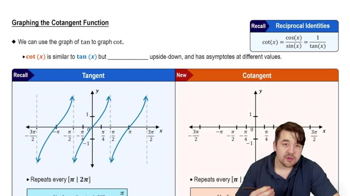{Use of Tech} A family of superexponential functions Let ƒ(x) = (a + x)ˣ , where a > 0.
a. What is the domain of f (in terms of a)?
 Verified step by step guidance
Verified step by step guidance Verified video answer for a similar problem:
Verified video answer for a similar problem:



 1:36m
1:36mMaster Introduction to Calculus Channel with a bite sized video explanation from Patrick
Start learning